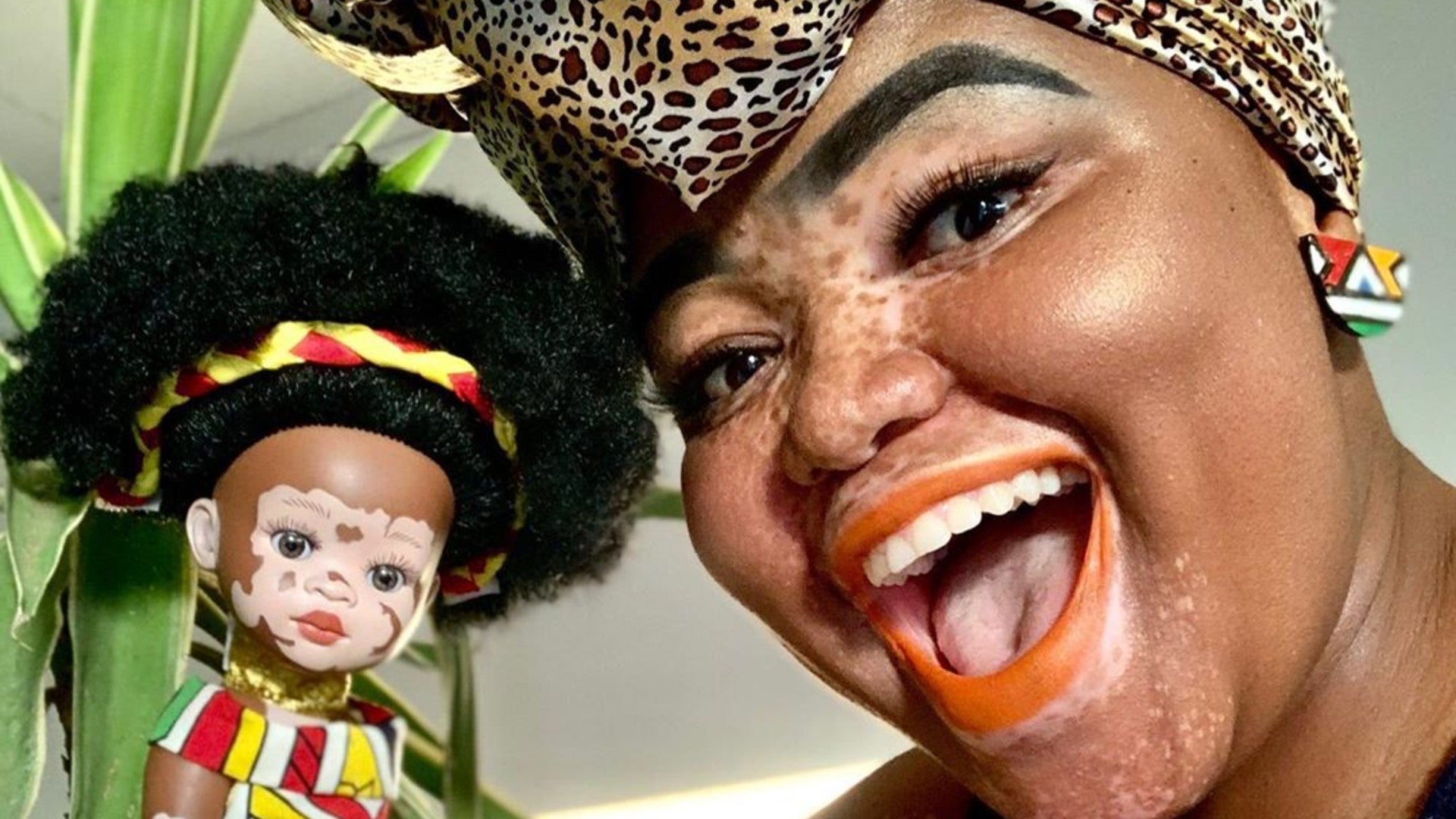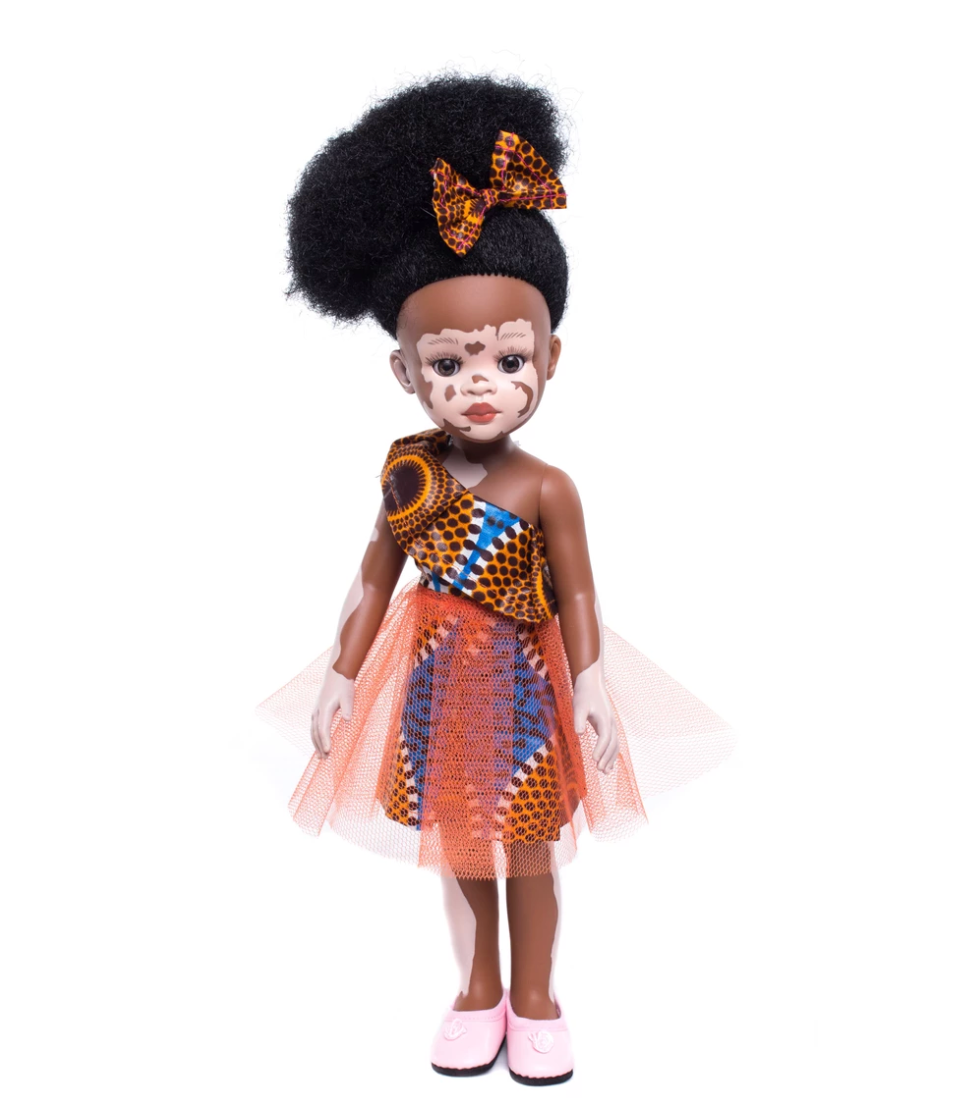
Every weekend as I’m scrolling through my feed and Insta-stalking the celebrities and influencers that I fangirl for, I come across something interesting and inspiring in the beauty space. From jaw-dropping transformations to drool-inducing hair, there’s always something that I can’t stop staring at or watching, and it instantly garners a double-tap.
We hear the words representation and inclusion so much now that the words can start to feel like buzzy HR speak that’s lost its meaning. But this past weekend I came across an Instagram post that warmed my heart, and actually made me want to spend some money.
This beautiful Black woman with vitiligo who looks ecstatic to have found a doll that looks like her is Boitumelo Rametsi (@boitumelo_spotted), a body positive spokesmodel in South Africa. The post is so sweet because you can feel her excitement and it’s infectious. And the repost from @naturalscurls, where I discovered her, reminded me why we talk about representation and why the conversation around it can’t start to feel old or belabored in any way, no matter how much we have to have it.
I started poking around and I found that dolls representing girls with vitiligo have been around for a few years thanks to companies like Kay Customz. But I was surprised to find such an array of dolls for Black girls (and women if we’re being honest). We talked about Healthy Roots Dolls and their Zoe doll earlier this month as a fantastic learning tool and representation for young Black girls.
But in addition to these brands, there’s Malaville, Ikuzi Dolls, Sibahle Collection, and Stacelina Monique for a variety of Black dolls that represent our multi-faceted beauty. There’s even a Barbie doll that represents girls with albinism. It’s fantastic to see that these doll makers have considered the importance of little girls being able to see themselves in their toys. The more they see themselves represented, the more they’ll know that their beauty is celebrated, seen, and considered enough.
We still have a lot to cover in the beauty space as representation is concerned (such as models of all sizes and abilities being represented). But while we still fight that good fight, an important beauty issue is being addressed through toys, where it affects girls at a developmental level. If a grown woman can be that excited to see a doll that looks like her, imagine what that must feel like for a child.
So next time I go out to buy a doll for one of my nieces or nephews, I’ll do the work to find one that truly represents them and celebrates their unique beauty. And whether they have kinky coils, a face full of freckles, blonde hair everywhere, or a wide nose, they can understand that they’re beautiful and worth replicating.







